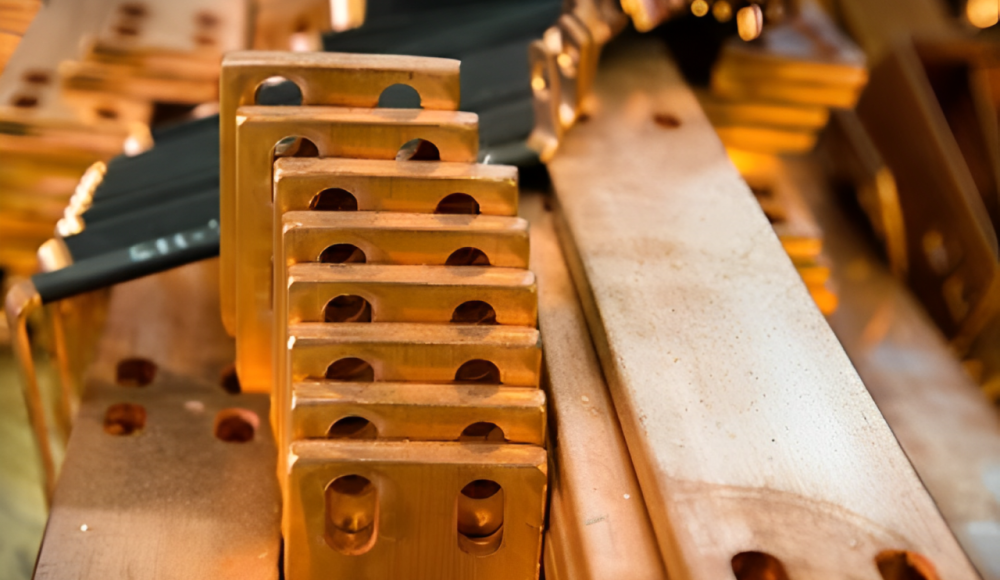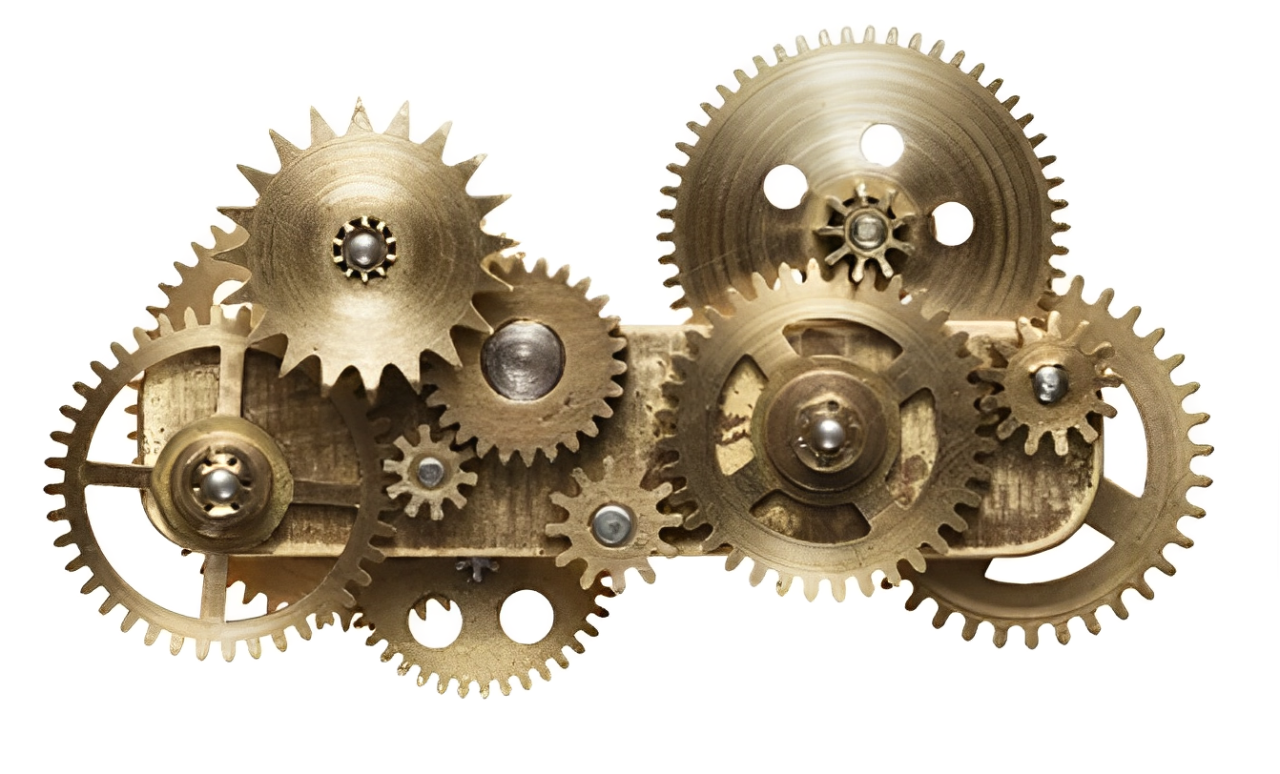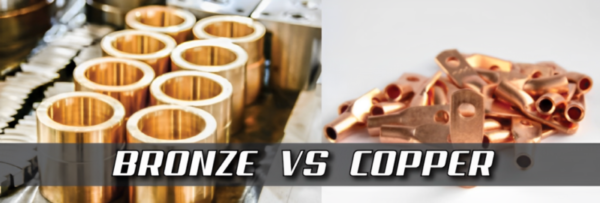銅と青銅は両方ともさまざまな形で世界に影響を与えています. これらは世界に影響を与えた 2 つの古代の重要な金属です. 銅, 既知の金属の最初の発見, ブロンズと銅の合金が形状を変えたもの, コンテンツ, そしてツールの使用, 美術, と建築. それにもかかわらず, それらには、プロパティの有用な違いが含まれます, 使用の性質, そしてコスト. この記事では、このような金属の性質と、両方の金属の長所と短所に焦点を当てます。. このほかにも, それらを適用したい状況について話し合います.
銅とは何ですか?
銅 ソフトです, 高い導電性と高い延性を備えた赤みがかったオレンジ色の金属. それは地球のマグマ/海洋地殻の一般的な要素であり、初期の社会が抽出して使用する最初の金属の1つです 8000 紀元前.
銅の主な特性
これが銅の金属の重要な機能のいくつかです:
- 色: 光沢のある光沢のある中程度の赤みがかった茶色.
- 密度:〜8.96 g/cm³
- 融点:1,085℃ (1,984°F)
- 導電率: 高レベルの電気的および熱伝導性.
- 展性 & 延性: 非常に順応性があり、延性があります.
- 耐食性: 緑色の層を栽培します, さらなる酸化が起こるのを防ぐ炭酸銅と呼ばれます.
ブロンズとは?
ブロンズ は, 実際には, 主に銅とスズで構成されています. 少量のアルミニウムが含まれています, ニッケル, と亜鉛. 通常、青銅器時代に適用されます 3000 紀元前, 人類の新しい改善された技術を示しました.
ブロンズの主な特性
それで, 以下は、ブロンズメタルの顕著な特徴です:
- 色: 明るい黄金色の茶色は、時には赤みがかった色合いを持っています.
- 密度:〜8.8 g/cm³ (構成に依存します).
- 融点: 銅未満, 950 摂氏 (1,742 華氏度) その上.
- 強さ & 硬度: それは純粋な銅よりもやや硬くて強いです.
- 耐食性: 海洋アプリケーションでは良いです.
- 摩擦抵抗: 低い摩擦係数.
ブロンズとカッパー – 究極の比較
それで, 青銅と銅の金属の詳細な比較は次のとおりです:
1. 構成
- 銅: 銅はCuを表す化学的要素であり、単純な物質です. その高い純度のため, それは、高い電気導電率や延性性などの特定の好ましい特性を持っています. それで, 電気的および装飾用の使用に非常に適しています. もちろん, 純粋な銅は、喫煙器具にも使用されます, など エジプトの水ギセル Vistahookahによって作られました, 純粋な銅で作られています.
- ブロンズ: ブロンズは、銅とブリキからなる金属です. 現代の青銅は他の金属を含めることができます, つまり. アルミニウムまたは亜鉛. その合金動作により、その靭性と耐摩耗性が向上し、大まかな用途に適しています.
2. 強度と耐久性
- 銅: 銅は比較的柔らかく順応性があります, 特に成形しやすい, ただし高強度用途には不向き. 装飾品を飾るのに最適です, または柔軟性が必要な場所.
- ブロンズ: 銅よりも強く、より高い圧力がかかります. 機械部品に最適です, および海洋用途向けのツール.
3. 耐食性
- 銅: 銅は水や空気にさらされると緑色のコーティングや錆を形成します。; この層は金属を継続的な酸化から保護します. しかし、それは酸性条件に求められます. それで, 簡単に破損する可能性があります.
- ブロンズ: 青銅は錫のおかげで銅よりも優れた腐食特性を持っています. 海水や海水中での腐食に強く、屋外や水中での使用に適しています。. このほかにも, 高振動が発生する可能性がある場所で多くの用途に使用できます。.
4. 導電率
- 銅: 銅は電気と熱の最良の伝導体の1つであることが知られています. したがって, 幅広い製品で使用されています, つまり. 電気配線, エレクトロニクス, および熱システム. 導電率の観点から, それは他の金属と非常に好意的に比較されます.
- ブロンズ: それは電気と熱を行います; その後, その導電率は銅よりも少ない. これにより、電気システムでの雇用が制限されています, 構造的/機械的アプリケーションでは少なくともそうではありませんが.
5. 作業性
- 銅: また、非常にプラスチックです, それで, 簡単に曲げることができます, 形状, そして溶接. このプロパティにより、このプロパティの柔軟性を必要とするデザインやコンポーネントに適しています.
- ブロンズ: プロパティでは密接に関連していますが, ブロンズは、硬度が高いため、銅よりも操作が困難です. もしそうなら、それはまだプラスチックであり、強い部分に成形するために使用できます, つまり. ギアまたは彫刻.
6. 外観
- 銅: 銅は赤オレンジ色のメタリックの光沢仕上げを持っていますが、錆びて緑色の色合いを獲得します. これは、世界のほとんどの地域の多くのアプリケーションで受け入れられる自然な流れです。, 美的魅力が増す.
- ブロンズ: ブロンズには金や茶色の要素が含まれており、銅よりも装飾や彫刻として長期にわたる維持が容易です。. 銅のように変色しにくい.
7. 料金
- 銅: 錫よりも入手しやすく、青銅よりも加工が比較的容易です。. その結果, 銅の価格は青銅よりも比較的安いです. このため、この概念はコストが比較的低いため、非常に広範囲に使用されています。.
- ブロンズ: それで, 青銅の製造に使用される錫やその他の金属は、純銅の製造に比べて高価です. その価格要因は、クライアント専用の使用に加えて耐久性レベルが高いことを示しています。.
次の表は、銅とブロンズの詳細な比較を示しています:
| 側面 | 銅 | ブロンズ |
| 構成 | 純粋な要素 (銅), 非常に導電性と延性. | 銅とブリキの合金はより丈夫で耐摩耗性があります. |
| 強さ & 耐久性 | 柔らかく柔軟です, 装飾に最適です. | より強く、より耐久性があります, ツールや海洋用途に適しています. |
| 耐食性 | それは保護的な緑の緑青を形成します, 酸に対して脆弱です. | 優れた耐食性, 海洋および屋外での使用に最適です. |
| 導電率 | 優れた電気導電率. | 導電率が低い, 構造/機械的アプリケーションで使用されます. |
| 作業性 | 形が作りやすい, 曲げる, と溶接. | 作業は困難ですが、ギアや彫刻などの耐久性のあるコンポーネントに適しています. |
| 外観 | 赤オレンジ色は緑の緑青に変色します. | ゴールデンブラウンはフィニッシュをより良く保持し、変色する傾向がありません. |
| 料金 | より手頃な価格, 広く使用されています. | より高いコストは、耐久性と専門的な使用を反映しています. |
ブロンズの用途
以下は、ブロンズメタルの多数の用途です:
- 彫刻 & アーティファクト: その美しさとキャストのしやすさから.
- 船舶用機器: 塩水腐食にさらされても完璧な特性を発揮します.
- 機械部品: 茂み, ベアリング, ギヤ.
- 楽器: サステイン用の水ゴングとタムタム, シンバルやチャイムを乗せてサスティンを得る.
銅の用途
以下は銅金属の数多くの用途です。:
- 電気配線: 銅やアルミニウムよりも負荷変動や電圧降下に優れた導体であるため、.
- 配管: 腐食と防錆, パイプに最適です.
- 美術 & ジュエリー: それに伴う輝きと色のため, 装飾品に使用できます.
- 産業用途: モーター内, 発電機, 熱交換器の用途.
銅と青銅のどちらを選択するか?
銅と青銅のどちらかを選択する際に考慮しなければならない要素をいくつか示します。;
- 電気応用: 導電性については銅を選択してください.
- 海洋または屋外での使用: 腐食を最小限に抑えるには青銅が推奨されます.
- 美的魅力: どちらのメタルも素敵です; どちらを使用するかは、色と酸化に関するアプリケーションの詳細によって異なります。.
- 強度要件: 強度が重要な機械部品には青銅を使用する必要があります.
- 予算: 銅は最も安価な材料と考えられています.
持続可能性とリサイクル
性質の違いはあるものの、, 銅と青銅はリサイクルしやすい 2 つの材料です. 銅を再利用しても品質が劣化しない, ブロンズ, 銅と同じように再合金することができます. これにより、両方の金属がさまざまな産業において環境に優しい商品であることが保証されます。.
現代のイノベーション
青銅と銅にはナノテクノロジーにおける新たな用途がある, 再生可能エネルギーシステム, 抗菌コーティング. 銅は医療ケアの表面上の微生物の存在を最小限に抑えるのに効果的です.
結論
結論は, 銅と青銅は、さまざまな用途に適した特性があるため、多くの人に好まれています。. 銅は電気および装飾用途に最適であり、青銅は. このほかにも, 靭性があるため、さまざまな用途に使用できます, そして耐久性, 湿った環境にさらされている. いくつかの違いについての知識, それが産業に関するものであるかどうか, 芸術的, または実用的な. そうすることで正しい選択と決断ができるようになります. この 2 つの永遠の金属を利用する正しい決断をしてください.
よくある質問
- 青銅は銅より強いですか?
はい, 青銅は金属を接合したものであるため、純銅よりもわずかに硬く耐久性があります。.
- 青銅は電気を通すことができますか?
電気の優れた導体である青銅は展示と同時に使用できますが、銅は青銅よりも導電性があります。. それで, さまざまな規模の電気用途に使用されます.
- どの金属が彫刻に適していますか, 銅または青銅?
ブロンズは、その強さとモデリングの容易さのために彫刻に最も適しています. このほかにも, 耐腐食性の重要な特性があります. 一方で, 銅は酸素と反応します, 水分, 二酸化炭素を形成して、緑色の緑青銅炭酸塩を形成します.
- なぜ銅は緑色に変わるのですか?
銅は酸素と相互作用します, 水分, および二酸化炭素. それで, それは銅をパッシブ化する炭酸銅の緑色の層を形成します.
- 青銅と銅の錆びないものです?
はい, 錆が鉄にのみ形成されるため、金属は錆びません. 青銅が錆びにくいほど、特定の状況下で腐食する可能性があります.
- ブロンズは銅よりも費用がかかります?
はい, ブロンズは合金であるため、より費用がかかります. 製造するには、より多くの材料とプロセスが必要です.








